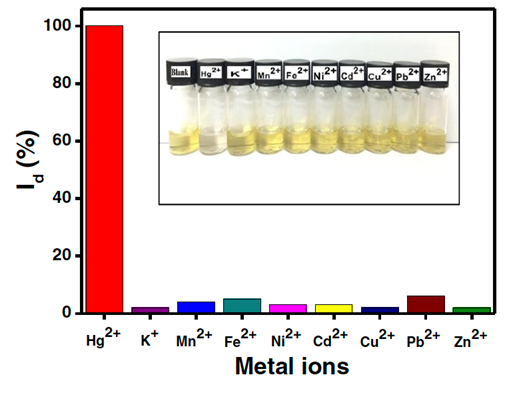Nanocomposite as an optical sensor
A sensor is a tool to detect a change that occurs in a system. An optical sensor is a device that can detect any changes in light and convert them to electrical signals. Interestingly, color changes resulting from differences in light intensity can be applied directly and make it more flexible. Modifications to the composites of silver nanoparticles and graphene oxide show that nanocomposites can be used as tools to detect the presence of mercury. The reaction between mercury and silver nanoparticles affects the surface area of silver nanoparticles and inhibits Surface Plasmon Resonance where the light profile of silver is lost. More interestingly, silver only reacts with mercury even in the presence of other metals.
Changes in the light profile make continuous measurements are possible. The yellow solution of the mixture of silver nanoparticles and graphene oxide nanocomposites will be faded after it has been mixed with a solution containing mercury. This color fading is an indicator that a solution has been contaminated or contains mercury metal which is harmful to health. As in the figure, UV-Vis measurement shows that the absorption intensity for mercury is 100% compared to other metals and through the naked eye, color changes can be identified directly.
Changes in the absorption intensity of silver and graphene oxide nanoparticles nanocomposites with the addition of 100 mM of mercury and 500 mM of other heavy metals. Photographs of nanocomposite color differences after the addition of several different heavy metals.
Dr. An'amt Bin Mohamed Noor




/seh2.jpg)
-Program./visit1.jpg)